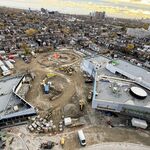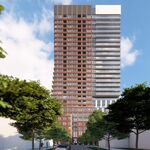ksun
Senior Member
^^And your post is highlights exactly my main gripe with farecard systems. It allows the agency to design confusing fare systems that'll end costing the rider more, and will likely push people back to driving. Using transit shouldbe hassle free and simple.
Creating a distance based, upcharge based on whatever mode you tap onto, which station you get off, sounds great on a transit message board, but in reality it just makes transit riding expensive and confusing to use.
really? Why would farezone be complicated and confusing?? Riders don't need to know all the details, right? What they need to do is just to scan or swipe the card. It is no more complicated than a single fare system.
Unless you think it is hard for them to figure out how much to pay? Well, plenty of cities are doing that in the world and I am sure Torontonians are intelligent enough to read a table which outlines the farezone. London has it, vancouver has it. How is that complicated? There is no hassle associated with distance based fare for the rider whatsoever.
Back in the days, Toronto did have a farezone system with 3 zones:
http://transit.toronto.on.ca/archives/maps/guide1954f.gif
If you are concerned about costs -- it is one way or another, all from riders pockets. How would implementating fare zones make transit riding more expensive? If anything, it will be more fair to riders. I don't buy this "if you make long distance rider pay more, they will choose to drive". Nope, no matter how you put it ($5?), taking transit will still be cheaper than driving (+parking). It won't affect the incentive for people to take transit whatsoever. Drivers will still drive.
With all the extension to Vaughan, and Richmond Hill, I don't think a single fare system should be kept. Ask yourself, should someone from Vaughan Centre pay exactly the same fare to travel to Yonge/King as someone from Wellesley station? And I really don't think it is too much to ask the former to spend $5 to get downtown Toronto, from a different city.






